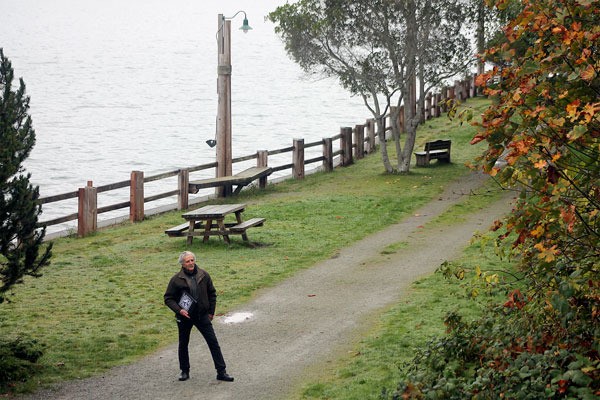Langley residents say Seawall Park doesn’t need a complete artistic facelift to make Langley a destination. The focus instead should be on wheelchair accessibility and functional art that accents, not alters, the area’s existing natural feel.
Those were among the dominating sentiments expressed during a community forum Thursday, June 23 at Langley United Methodist Church. The meeting was organized by the Langley Arts Commission concerning the city’s six-year $800,000 master art plan.
Feeling much like an economic development strategy meeting, the format was open-ended as arts commission and community members worked together to discuss the proposed plan’s dos and don’ts. Attendees were divided into discussion groups to plot potential ideas for Seawall park.
The crowd appeared largely on the same page regarding plans, with it becoming quickly clear that people’s central priority is toward making Seawall Park wheelchair accessible. As of now, the two points of entry are the steep hill at the intersection of Anthes Avenue and First Street, and a staircase on the east side of the park.
“The most important thing here is the accessibility,” Jeannie Miller, Langley arts commission chairwoman said. “As of now, there is no way for wheelchair-bound people to make their way down to the park.”
Improved signage was also brought up repeatedly throughout the group discussion. Community members groaned over a lack of park signs, both at sea level and on First Street; a few pointed out that some passersby never make it down to Seawall Park because they aren’t aware it’s there.
“A lot of people, not only tourists but locals, don’t take advantage of the space because of poor signage,” Megan Scudder, a discussion group scribe and Langley resident said during her group’s presentation. “The signage could be artfully done.”
Everyone in attendance also voiced approval for the inclusion of functional art in Seawall Park. Features such as benches, tables and structures for children to play on were a hit with the crowd, who generally shunned the idea of bringing in large pieces of art that could change the natural ambiance of the park. Langley arts Commissioner Frank Rose pointed out the city could infuse artistic flair into the picnic tables and benches, which pleased the crowd.
Those is attendance were, however, not in favor of completely altering the face of Seawall Park from its natural character.
One or two of the discussion groups pointed out any new art that may be installed should look cohesive with the rest of Langley while being culturally relevant. However, the majority of the groups preferred to scrap the idea of new sculptures altogether. The park is not really a place for sculpture or fine art, said Miller, due to the weather and the resulting maintenance that would come with it. Many also thought a sculpture would be repeatedly vandalized.
The main issue for those in attendance, though, was maintaining the natural environment the park has and not obstructing the view of Saratoga Passage. The only idea that received positive feedback that could potentially pose an issue to the view was the construction of a small roofed structure for community events, such as a gazebo.
“We want to do whatever we can to maintain the natural ambiance that’s already there,” Miller said. “People come down for the beautiful view and we don’t want to take that away.”
The city of Langley OK’d $800,000 for the arts council’s six-year plan for Seawall Park’s development on May 16. While the plan was approved, the schematic design and details regarding what will be put into the park were unclear. Rose said that was due to the arts council’s desire to include the community in every step of the process.
“We’re not moving ahead with anything at this point because we have a conceptual idea in place,” Rose said. “If we do propose something, then the community will have another opportunity to approve that. This is a step by step process.”


